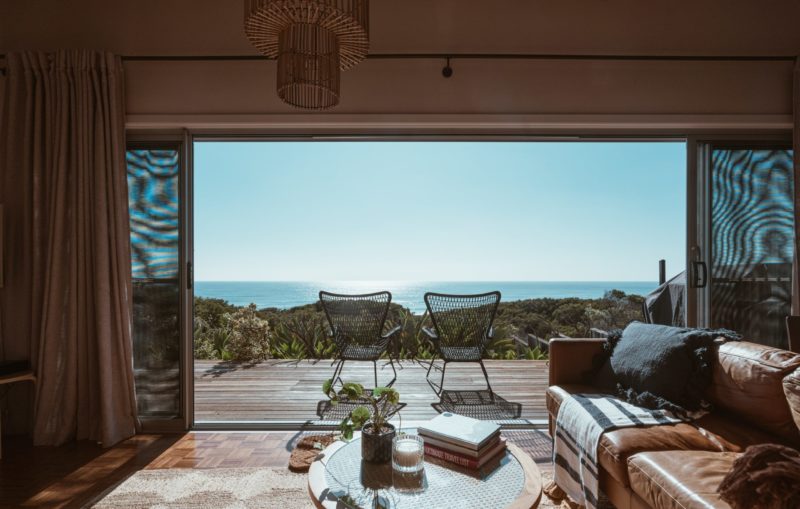Assume you have you can clean a spill and your cloth with bleach. Should you get some bleach and slather it on the issue area? No! Continue reading to find out how to clean bleach cleanable upholstery. And plain bleach isn’t the solution. So, how to bleach a loveseat?

When dealing with a spill, the most important thing to remember is to clean it up as soon as possible. The longer a stain remains, the more difficult it is to remove. Begin by attempting to clear each spot with water.
Bleach and other harsh cleansers should only be used as a last option, but this gets increasingly difficult because many healthcare institutions have their cleaning routines.
As you’ll see in our handy upholstery cleaning guide below, bleach is only effective against specific spills and should be used only when other cleaning agents fail. Even so, a dilution of 4 parts water to one part bleach is advised.
Most importantly, do not use bleach if the upholstery cannot be bleach cleaned. A cleanable bleach upholstery should be constructed of solution-dyed fiber, such as solution-dyed nylon or olefin, while ordinary old polyester, nylon, or cotton is not bleach cleanable.
You’ve undoubtedly heard it a thousand times, but always test cleaners in an inconspicuous area first to ensure no discoloration occurs.
Another thing to keep in mind is that after cleaning a place, it may appear different since the spot you cleaned is now cleaner than the surrounding area. If this happens, a thorough water-extraction cleaning of the whole surface is advised.
What is olefin?
Olefin (Polypropylene and Polyethylene are two kinds) is an artificial fiber manufactured from melted plastic pellets and then pushed through a spinneret, which resembles a showerhead, to generate the thread spun into yarn sewn into the fabric.
Because the fiber is resistant to dyeing, color is added during the melting process, resulting in a cleanable bleach fabric comparable to Solution-Dyed Nylon.
It is utilized in a broad range of items due to its excellent durability and water resistance, including Tyvek, clothes, vehicle and furniture upholstery, ropes, carpets, and even diapers.
Olefin fabric may be the ideal choice for your next project, whether it’s upholstery for a church pew, auditorium seating, theater seating, acoustic panels, or a variety of other uses.
Historically, propylene was burned off during oil extraction since it was considered to have no industrial value. Upcycling is a method of creating previously believed to be garbage but can now be chemically converted into usable commodities.
Polypropylene is made by polymerizing propylene compounds. What exactly does this mean? Simply, smaller single molecules are joined together to produce larger chain molecules with repeating structural units.
The long-chain molecule polypropylene, now in pellet or bead form, is next melted and threaded through a spinneret machine to connect all the molecules.
Because polypropylene is chemically stain-resistant, you must add solution-based colors during the melting process. It implies that if a dye or stain is added after the thread is formed, it will not take the paint or stain.
That is why it is critical to solution dye or pigment dye your olefin as it is melting. After the polypropylene thread is spun into line by the spinneret, the yarn is woven into your desired textile application.
How to bleach a loveseat?
Here are a few pointers to maintain your cloth in good condition when knowing how to bleach a loveseat.
Before beginning any cleaning procedure, carefully vacuum the sofa, paying specific attention to the seams and between the cushions. It prevents dirt that has already settled on the couch from spreading while cleaning.
Remove any surface crumbs, pet hair, and blanket fluff using a lint roller.
Begin with the cleaning agent with the lowest number given for each stain. Remove any extra dried material from the cloth with care. Next, blot the cleaning solution with a clean white cloth, moving from the outside of the stain inward.
You should use clear water to rinse. Wet extract and air dry if the cleaning product does not thoroughly remove the stain. Then move on to the agent with the following higher number. If necessary, repeat.
You should constantly test colorfastness in an inconspicuous area before spot cleaning.
Everything revolves around timing! Blot up any liquid spills as soon as possible. And, if required, sponge off with clean water. The longer a stain remains, the more difficult it is to remove.
Due to residual soiling from the remainder of the sitting surface, the cleaned region of the fabric may seem different from surrounding sections after spot cleaning. Therefore, it is advised that the whole cover be cleaned with water extraction.
Cleaning agent 9, bleach solution, can be used to remove intensely colored stains. Allow resting for up to an hour after applying to the discolored area. Then, remove all remnants of the solution by water-extracting.
You should not mix bleach with other cleaning products, and you should thoroughly rinse it after use.
If you feel like your furniture is getting any type of buildup from the cleanser, you may conduct a clear water “rinse” (using the same cautious brush approach with clean water) as an optional last step. I didn’t think it was essential for my chairs, but others might!
Conclusion
That sums up our talk on how to bleach a loveseat. Bleaching your loveseat may be a very tricky process so, properly follow the guide above. Then, dig for more information about the products you are using and your loveseat.
